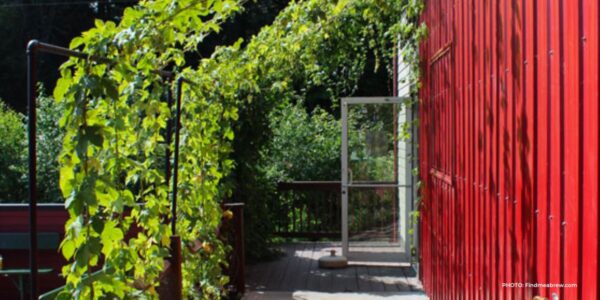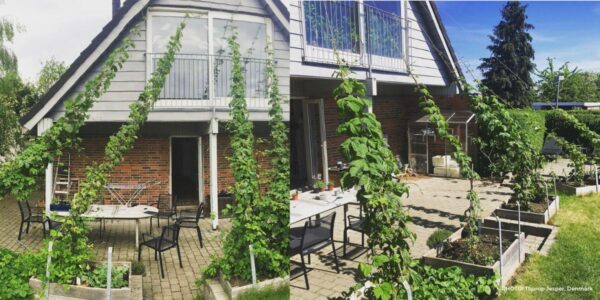Summers are getting hotter, and energy costs to cool your house are increasing. Why not plant hops for shade as a great to answer the challenge of cooling your home with an effective, sustainable solution while adding some greenery? Hops are for more than making beer!
The Natural Solution: Planting Hops
Did you know that adding shade outside your house reduces the solar heat that gets in through windows and walls? Using hops as shade for the hotter (south) side of your home, over your porch, or around your garden pergola can be a natural solution to reduce solar heat gain and improve energy efficiency by as much as 6-10 percent in summer.
The EPA points out that using vegetation to mitigate heat islands has many benefits. These include reduced energy demands (lower bills!), improved air quality and air pollutant removal, reduced stormwater runoff, and improved water quality by absorbing and filtering your rainwater.
Training Hops for Optimal Growth
Hops grow best with at least 6 hours of sunlight, making the south side of the house the best place for them. Plant hops rhizomes in Spring, ideally 3’-5’ apart in the earth. In the first year, hops concentrate on growing their roots, and the plants (the vine or bine parts) may not get very tall.
The first year, do all you can to help your babies to grow, grow, grow! Then, next year you can start pruning and training them into an even more delightful shade system. When the young vines are about one- foot long, three or four vines are trained clockwise per string staked to the hill. It i’s common to run two-three strings per hill. The remaining weaker bines should be cut off at the ground to focus more energy on the trained bines. Read the relevant sections on our “Hop Gardening” page for detailed information.
The Beauty of Hops

The hop plant (Humulus lupulus) is a pretty perennial, producing annual bines from an overwintering rootstock to add a unique, lush green backdrop to your summer. Towards the end of summer, the flowers – which look like little cones, come out. They may add a pleasant citrus smell to the air depending on the variety.
In the Fall, the plant dies down, making way for the winter sun to warm your house. This also means that hops won’t choke or overcome your other plants the way some climbing plants like wisteria or kudzu might.
If you’re crafty, you can take the bines and create dried wreaths to decorate your doors and spaces. Hops are also a remedy for sleep aid, so put some dried cones into a pretty bag with lavender and keep them by your pillow!
If you are a homebrewer, this is your time to shine! Experiment with your harvest. If you’re not a brewer, make friends with some – they’d love to help you with your harvest!
Hops are so versatile. For 40 years, I have been selling fresh flower hops and rhizomes and have seen many brews made from different crops. It brings me joy to see my customers grow their own. Looking for inspiration on how to grow yours? Check out the “Homegrown Hop Yards” photo gallery and buy your rhizomes from March to May “Hops Rhizome Information.”
Hop 2 it!
